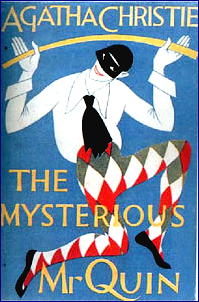Search Results for 'Agatha Christie'
Did you find what you wanted ?
Tue 13 Mar 2012
Posted by Steve under
Reviews[3] Comments
IT IS PURELY MY OPINION
Reviews by L. J. Roberts
AGATHA CHRISTIE – The Mysterious Mr. Quin. Collins, UK, hardcover, 1930. Dodd Mead, US, hardcover, 1930. Reprinted many times in paperback. Note that the Bestseller paperback, 1940, omits three stories. Film (from the short story “The Coming of Mr. Quinâ€): Strand, 1928, as The Passing of Mr. Quin.
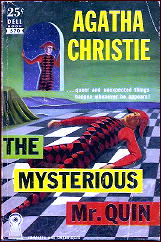
Mr. Satterthwaite, although 62 years old, is described as a dried-up man. (Views on age have changed over time.) He is wealthy, loves the good things in life, definitively British and is a keen observer of people. The last attribute increases with each encounter with Mr. Harley Quin.
Mr. Quin is a gentleman of mystery: Is he real with supernatural powers, or Ms. Christie’s very own, and very different version of Holmes? Quinn was, in fact, Ms. Christie’s favorite character. In her autobiography, she describes him as “a friend of lovers and connected with death.â€
She does allude to the classic Harlequin in “The Soul of the Croupier†when Satterthwaite expresses surprise seeing Quin. Quin responds “It should not surprise you,†he said. “It is Carnival time. I am often here in Carnival time.â€
In general, I’m not a fan of short stories, but I find myself frequently re-reading these. I do love Satterthwaite’s line of “I can put up with vulgarity, but I can’t stand meanness.†The stories have a slight supernatural quality to them, but always with a logical explanation possible, and certainly to the solutions of the crimes.
I enjoyed Christie’s perception of 1930s England as being multi-cultural and non-denominational, but wonder who true that was. What I most enjoy, however, is that each story stands alone and is intriguing and compelling on its own merit.
Rating: Excellent.
Sat 30 Apr 2011
REVIEWED BY GEOFF BRADLEY:
AGATHA CHRISTIE’S POIROT. ITV [UK]. Season Eleven: 01 through 22 September 2008. Hercule Poirot: David Suchet, Adriadne Oliver: Zoe Wanamaker.
At least this is how the title of this [four] part series (2 hours each, less adverts) was given in the Radio Times. On screen it appeared to be the less grammatical Agatha Christie Poirot.
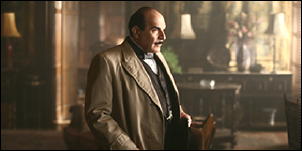
First up was “Mrs. McGinty’s Dead.” This is workaday rather than top class Christie, and I had one or two quibbles about the “red herrings” which relied a little too much on coincidence. But the adaptation was well done, and I enjoyed the production greatly. The part of Adriadne Olliver was played very well by Zoe Wanamaker.
Second was “Cat Among the Pigeons.” I haven’t read this book, but looking at references, the producers have made a few slight changes, first to have Poirot on hand at the start and secondly to “sanatise” the sub-plot. Rather like the previous episode this was a very enjoyable production which I enjoyed despite what I perceived as flaws in the plot.
Third was “Third Girl,” in which Zoe Wanamaker returns as Ariadne Oliver. Again not the strongest of stories, and I think it’s fair to say that as this series goes, the best is not still to come. Still I found it quite watchable despite its obvious weaknesses.
— Reprinted from Caddish Thoughts #134, November 2008.
Editorial Comments: Not included in Geoff’s review at the time was Episode 4: “Appointment with Death.” There has been one further season of four additional episodes, making 65 so far with David Suchet as Poirot. The most recent episode to date has been “Murder on the Orient Express,” which aired 11 July 2010. It has been reported that a 13th and final series is scheduled for production in 2011.
Thu 27 May 2010
A REVIEW BY RAY O’LEARY:
JOHN CURRAN – Agatha Christie’s Secret Notebooks. HarperCollins, hardcover, September 2009.
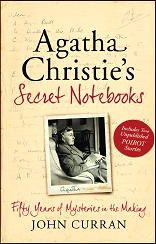
Since John Curran is the literary adviser to the Agatha Christie estate he was allowed to enter the two locked rooms of her house after it was donated to the National Trust and opened to tourists.
The two rooms mostly contained copies and first editions of her various novels, story collections and plays but in the smaller room, on the bottom shelf of a bookcase, he found a cardboard box containing notebooks in which Christie jotted down various story ideas and preliminary plotting for most of her novels, stories and plays.
These notebooks were in no manner orderly; when Christie had an idea she grabbed a notebook at random and jotted it down on the first blank page available. So notes for various of her works are scattered, most of them in more than one notebook and the numbers on them mean nothing as to when she made her entries.
Also, despite what is printed on the dust jacket, none of the notebooks contains any of the plot ideas for The Murder of Roger Ackroyd nor Murder on the Orient Express and a few others of her works. (He never discusses Witness for the Prosecution, play or story, so I’m presuming that might be another.) The notes for those works presumably are lost. What is here is an abundance of ideas used and rejected for most of the things Christie wrote.
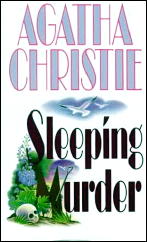
One thing Curran discovered was that the last Miss Marple novel, Sleeping Murder, was written in the late 40’s and not during World War II as previously believed. (Curtain is another book not covered here.)
Sleeping Murder‘s original title was going to be Cover Her Face, but it was changed after P. D. James used that title. The two major finds, however, are unpublished short stories featuring Hercule Poirot, which are printed at the end of his commentary.
The first story was “The Capture Of Cerberus” the 12th Labor Of Hercules. From November, 1939 through most of 1940 the first 11 Labors had been published by the Strand Magazine. It wasn’t until 1947 that she wrote the 12th story which completed the Labors and made possible the collection of that title.
This original story was unsuitable for pretty obvious reasons: It features a character clearly based on Adolf Hitler and portrays him in a favorable light since, in this story, he has a change of heart and becomes a proponent of World Peace, which would have been pretty hard to swallow with bombs falling on London.
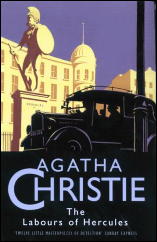
And though Curran doesn’t say so it in his notes, a plot device turns up that was used in Hitchcock’s 1940 film Foreign Correspondent: the kidnapping of a political figure and his replacement by a double who is then assassinated.
The other story is called “The Incident Of The Dog’s Ball.” This is much better, but was never offered for publication because it is a 20 page version of what was to become the novel Dumb Witness (Poirot Loses a Client). Christie must have realized she could easily turn it into a novel so never sent it to her agent.
Finally, if you haven’t read a lot of Agatha Christie’s output and are planning to, be warned: before every chapter Curran states which novels and stories will have their solutions revealed in his discussion.
I finished Christie’s detective novels and stories and some of her plays (she wrote 20) a long time ago so that didn’t bother me. For those who haven’t, you might put off reading this until after you have. Also, Curran uses the politically incorrect (racist) original title for And Then There Were None when talking about that book.
Tue 27 Apr 2010
Reviewed by MIKE TOONEY:
AGATHA CHRISTIE – And Then There Were None. Washington Square Press (Pocket Books), hardcover, July 1973; 173 pages. ISBN 0-671-70466-4.
If you haunt used book stores (ever dwindling numerically) like I do, you occasionally come across something unexpected. Such was the case with this particular edition of an Agatha Christie novel:
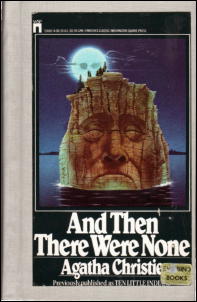
This is a hardcover version of the mass-market paperback (and there is no mention anywhere in this edition of the book’s original, politically incorrect title).
What makes this version special is the 48-page “Reader’s Supplement” inserted in the middle of the text. Clearly, the supplement is aimed at students, probably in high school.
The supplement breaks down as follows:
1. Portrait photo of Agatha Christie (1 page)
2. “Biographical Background” (3 pages)
3. “Historical Background” (2 pages)
4. “Pictorial Background” (22 pages)
5. “Visual Glossary” (2 pages)
6. “Literary Allusions and Notes” (5 pages)
7. “Critical Excerpts” (13 pages).
“Pictorial Background” (all photos are B&W and grainy):
“A View of the Terraces at Torquay” – “Agatha Christie with Her Husband at Their Devonshire Home” – “A Third-class Coach on an English Train” (sketch) – “A Striking View of the Plymouth Shoreline” – “The Devonshire Countryside” – “An English Village Similar to Sticklehaven” – “A Flashy Sports Car of the Period” – “The Occupants of the Motor Boat to Indian Island” (scene from the 1945 movie) – “A ‘Correct’ English Butler” (sketch) – “Harley Street, London, Where Numerous Doctors Practice” – “The Guests Enjoy Their First Dinner” (1945 movie) – “A Gramophone—1905” (sketch) – “A British Courtroom Scene” – “Some of the Guests on the Terrace” (1945 movie) – “A Rocky Coast in Devonshire” – “Vera and General MacArthur at the Shore” (1945 movie) – “A Tea Tray and Service” – “Another Shocking Warning” (1945 movie) – “The Latest Victim” (1945 movie) – “The Last Two Survivors in a Showdown” (1945 movie) – “… And Then There Were None ….” (1945 movie) – “Scotland Yard, Viewed from Westminster Bridge—1940s”.
“Visual Glossary” (artist’s sketches):
Cosh, truncheon, stiletto, torch, grandfather chair, siphon, gimlet, heliograph.
“Literary Allusions and Notes”:
Thirty-seven entries including “cairngorm,” “trional,” “pukka sahib,” “red herring,” “chloral,” “Caesar’s wife,” and “had one over the eight.”
“Critical Excerpts” (published comments from critics of various eras about mystery fiction, including a few about this particular book — and how many of these people have you heard of?):
R. Austin Freeman (1924) – Willard Huntington Wright (1927) – Dorothy L. Sayers (1928) – George Godwin (1929) – P. G. Wodehouse (1929) – Ronald A. Knox (1929) – H. Douglas Thomson (1931) – Stephen Leacock (1939) – Times Literary Supplement (1939) – The Spectator (1939) – Ralph Partridge (1939) – M. L. Prevost (1940) – Will Cuppy (1940) – Marian Wiggin (1940) – Saturday Review of Literature (1940) – Isaac Anderson (1940) – The New Yorker (1940) – The Pocket Book of Great Detectives (1941) – Edmund Crispin (1961) – Fredric Wertham, M. D. (1926) – Current Biography (1964) – Harry Shefter (1964) – Colin Wilson (1969).
The characteristically arch Wodehouse excerpt comes from his article “About These Mystery Stories” in the Saturday Evening Post (1929):
“For the mystery novel Suspicion Handicap, the field is limited. You know it wasn’t the hero or the heroine who did the murder. You are practically sure it couldn’t have been Reggie Banks, because he is a comic character, and any vestige of humor in any character in a mystery story automatically rules him out as a potential criminal. It can’t have been Uncle Joe, because he is explicitly stated to be kind to dogs. So you assume it must have been some totally uninteresting minor character who hardly ever appears and who is disclosed on the last page as the son of the inventor whom the murdered man swindled forty years ago. At any rate, you know quite well it’s one of them ….
“If I were writing a mystery story I would go boldly out for the big sensation. I would not have the crime committed by anybody in the book at all …”
The next time you’re in a used book store, you might want to look for this edition of And Then There Were None, but you might have to search the children’s section to find it.
Wed 11 Nov 2009

TOM ADAMS [Artist] – Agatha Christie: The Art of Her Crimes. The Paintings of Tom Adams, with a Commentary by Julian Symons. Everest House, hardcover, 1981.
Paperback cover art reaches a new high with this deluxe hardcover edition of over ninety Tom Adams paintings, all done for various editions of Agatha Christie’s mysteries, both in this country and in Britain.
Those expecting numerous repeated portrayals of Miss Marple and Hercule Poirot, two of Christie’s most well-known detective characters, will come away disappointed, however.

Adams leans more to the symbolic and to surrealism in his work, and the commentary provided by both himself and by noted mystery critic Julian Symons reveals just how many clues he managed to work into the overall design of each of the covers here.
Tastes in art being what they are, it is amusing to note that one of the paintings Adams considers one of his best, Symons slides over as nothing out of the ordinary.
The subject matter of Christie’s works being what it is, it is not surprising that the overall effect is rather a dour one — lots of skulls, bloody instruments, and other paraphernalia of murder.
Nevertheless, given the double-barreled insights into the works of perhaps the most famous mystery writer of all time, Agatha Christie’s many fans will find this more than a must for browsing.
– From The MYSTERY FANcier, Vol. 6, No. 2, March/April 1982
Sun 19 Jul 2009
REVIEWED BY GEOFF BRADLEY:
AGATHA CHRISTIE’S MARPLE: TOWARD ZERO. ITV. Series 3, Episode 3. First telecast in the UK on 03 August 2008. Geraldine McEwan, Julian Sands, Paul Nicholls, Greg Wise, Saffron Burrows, Julie Graham, Tom Baker, Eileen Atkins. Based on the novel by Agatha Christie. Director: David Grindley (uncredited).
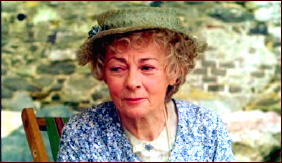
Agatha Christie’s Marple which is what it was called in the listings, returned with the penultimate outing for Geraldine McEwen in the eponymous role. It was an adaptation of Towards Zero, a Christie novel in which Miss Marple plays no part.
Here she was interjected into the otherwise fairly faithful plot (if my faltering memory of reading it some twenty odd years ago plus the vague plot descriptions in a couple of reference books can be relied upon), involving a gathering of people at the home of Lady Tressilian — played by Eileen Atkins in a fairly star-studded cast which included Tom Baker (former Dr Who and Sherlock Holmes), Saffron Burrows (of Boston Legal) and Alan Davies (Jonathan Creek).
I have been critical of previous outings in this series but I enjoyed this one. The post-WWII settings were superb, and I thought McEwen kept the knowing grins down to at least a reasonable proportion. There was an amusing gaffe when a scene showing the protagonist Neville Strange (Greg Wise), a tennis player, at Wimbledon (incidentally his opponent was played by Greg Rusedski), had the scores shown on an electronic scoreboard.
Mon 15 Dec 2008
Part I was posted about a week ago. Here’s the same introduction I used as a prologue and an explanation back then: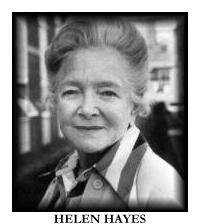
Note that the movies listed below, each based on an Agatha Christie novel or short story, are only those which are not included in the original Crime Fiction IV, by Allen J. Hubin. (They are included in the Revised CFIV, but not in this expanded version, as well as the online Addenda, where they also are.)
For more information on each of the movies or TV series episodes mentioned, follow the links provided to their corresponding IMDB entries.
CHRISTIE, AGATHA
● The Man in the Brown Suit. TV movie: Warner, 1989 (scw: Carla Jean Wagner; dir: Alan Grint). SC: Colonel Race (Ken Howard)
● The Mirror Crack’d from Side to Side. TV movie: BBC/A&E, 1992, as The Mirror Crack’d (scw: T. R. Bown; dir: Norman Stone). SC: Miss Marple (Joan Hickson)
● The Moving Finger. TV movie: BBC/PBS/A&E, 1985 (scw: Julia Jones; dir: Roy Boulting) . SC: Miss Marple (Joan Hickson). Also: Granada, 2006 (scw: Kevin Elyot; dir: Tom Shankland). SC: Miss Jane Marple (Geraldine McEwan)
● The Mystery of the Blue Train. TV movie: Granada, 2005 (scw: Guy Andrews; dir: Hettie MacDonald). SC: Hercule Poirot (David Suchet)
● The Murder at the Vicarage. TV movie: BBC/A&E, 1986 (scw: T. R. Bowen; dir: Julian Amyes). Also: ITV, 2004 (scw: Stephen Churchett; dir: Charles Palmer). SC: Miss Marple (Joan Hickson)
● Murder in Mesopotamia. TV movie [series episode]: A&E, 2001 (scw: Clive Exton; dir: Tom Clegg). SC: Hercule Poirot (David Suchet)
● A Murder Is Announced. TV movie: BBC/PBS, 1985 (scw: Alan Plater; dir: David Giles). SC: Miss Marple (Joan Hickson) Also: ITV, 2005 (scw: Stewart Harcourt; dir: John Stickland). SC: Miss Marple (Geraldine McEwan)
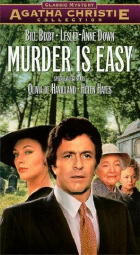
● Murder Is Easy. TV movie: CBS, 1982 (scw: Carmen Culver; dir: Claude Whatham)
● The Murder of Roger Ackroyd. TV movie [series episode]: BBC, 2000 (scw: Clive Exton; dir: Andrew Grieve). SC: Hercule Poirot (David Suchet). [The movie is reviewed here on the M*F blog.]
● Murder on the Links. TV movie [series episode]: London Weekend Television,1995 (scw: Anthony Horowitz; dir: Andrew Grieve). SC: Hercule Poirot (David Suchet)
● Murder on the Orient Express. TV movie: MediaVest, 2001 (scw: Stephen Harrigan; dir: Carl Schenkel). SC: Hercule Poirot (Alfred Molina)
● The Mysterious Affair at Styles. TV movie [series episode]: London Weekend/A&E/PBS, 1990 (scw: Clive Exton; dir: Ross Devenish). SC: Hercule Poirot (David Suchet)
● Nemesis. TV movie: BBC/PBS, 1987 (scw: T. R. Bowen; dir: David Tucker). SC: Miss Marple (Joan Hickson)
● The Pale Horse. TV movie: A&E, 1997 (scw: Alma Cullen; dir: Charles Beeson)
● Peril at End House. TV movie [series episode]: London Weekend Television,1990 (scw: Clive Exton; dir: Renny Rye). SC: Hercule Poirot (David Suchet)
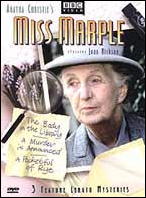
● A Pocket Full of Rye. TV movie: BBC/PBS, 1985 (scw: T. R. Bowen; dir: Guy Slater). SC: Miss Marple (Joan Hickson)
● Sad Cypress. TV movie [series episode]: London Weekend Television, 2003 (scw & dir: Dave Moore). SC: Hercule Poirot (David Suchet)
● The Secret Adversary. TV movie: London Weekend/PBS, 1982 (scw: Pat Sandys; dir: Tony Wharmby). SC: Tuppence & Tommy (Francesca Annis & James Warwick)
● The Seven Dials Mystery. TV movie: London Weekend Television, 1982 (scw: Pat Sandys; dir: Tony Wharmby). SC: Supt. Battle (Harry Andrews)
● The Sittaford Mystery. [Published in the US as Murder at Hazelmoor.] TV movie: Granada, 2006 (scw: Stephen Churchett; dir: Paul Unwin). SC: Miss Jane Marple (Geraldine McEwan). [Miss Marple did not appear in the book version. The film version seems to have been universally panned.]
● Sleeping Murder. TV movie: BBC/PBS, 1987 (scw: Kenneth Taylor; dir: John Davies) SC: Miss Jane Marple (Joan Hickson). Also: Granada, 2005 (scw: Stephen Churchett; dir: Ed Hall). SC: Miss Jane Marple (Geraldine McEwan)
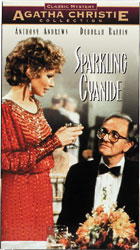
● Sparkling Cyanide. TV movie: CBS, 1983 (scw: Sue Grafton, Steve Humphrey, Robert Malcolm Young; dir: Robert Lewis). Also: ITV, 2003 (scw: Laura Lamson; dir: Tristam Powell). SC: Colonel Race (Oliver Ford Davies, as “Col. Geoffrey Reece”).
● Taken at the Flood. TV movie: Granada, 2006 (scw: Guy Andrews; dir: Andy Wilson). SC: Hercule Poirot (David Suchet)
● They Do It with Mirrors. TV movie: CBS, 1985, as Murder with Mirrors (scw: George Eckstein; dir: Dick Lowry). SC: Miss Marple (Helen Hayes). Also: BBC/A&E, 1991, as They Do It with Mirrors (scw: T. R. Bowen; dir: Norman Stone). SC: Miss Marple (Joan Hickson)
● Three-Act Tragedy. TV movie: CBS, 1986, as Murder in Three Acts (scw: Scott Swanton; dir: Gary Nelson). SC: Hercule Poirot (Peter Ustinov)
● Why Didn’t They Ask Evans? TV movie: London Weekend, 1980 (scw: Pat Sandys; dir: John Davies, Tony Wharmby)
● The Witness for the Prosecution. TV movie: CBS, 1982 (scw: Billy Wilder, Harry Kurnitz, Lawrence B. Marcus; dir: Alan Gibson)
Mon 8 Dec 2008
Note that the movies listed below, each based on an Agatha Christie novel or short story, are only those which are not included in the original Crime Fiction IV, by Allen J. Hubin. (They are included in the Revised CFIV, but not in this expanded version, as well as the online Addenda, where they also are.)
For more information on each of the movies or TV series episodes mentioned, follow the links provided to their corresponding IMDB entries.
CHRISTIE, AGATHA
● After the Funeral. TV movie [series episode]: Granada, 2005 (scw: Philomena McDonagh; dir: Maurice Phillips. SC: Hercule Poirot (David Suchet)
● At Bertram’s Hotel. TV movie : BBC/PBS, 1987 (scw: Jill Hyem; dir: Mary McMurray) . SC: Miss Jane Marple (Joan Hickson)
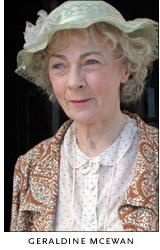
● The Body in the Library. TV movie: BBC/PBS, 1984 (scw: T. R. Bowen; dir: Silvio Marizzano). SC: Miss Jane Marple (Joan Hickson). Also: Granada, 2004 (scw: Kevin Elyot; dir: Andy Wilson). SC: Miss Jane Marple (Geraldine McEwan)
● By the Pricking of My Thumbs. TV movie: Granada, 2006 (scw: Peter Medak; dir: Stuart Harcourt). SC: Miss Jane Marple (Geraldine McEwan), Tuppence & Tommy Beresford (Greta Scacchi & Anthony Andrews ). [Miss Marple did not appear in the book version.]
● Cards on the Table. TV movie [series episode]: Granada, 2005 (scw: Nick Dear; dir: Sarah Harding). SC: Hercule Poirot (David Suchet) [and Zoë Wanamaker as Ariadne Oliver]
● A Caribbean Mystery. TV movie: Stan Margulies, 1983 (scw: Sue Grafton, Steve Humphrey; dir: Robert Michael Lewis). SC: Miss Jane Marple (Helen Hayes). Also: BBC, 1989 (scw: T. R. Bowen; dir: Christopher Pitt). SC: Miss Jane Marple (Joan Hickson)
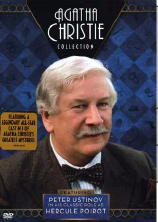
● Dead Man’s Folly. TV movie: CBS, 1986 (scw: Rod Browning; dir: Clive Donner). SC: Hercule Poirot (Peter Ustinov) [and Jean Simmons as Adriadne Oliver]
● Death on the Nile. TV movie: London Weekend/A&E, 2004 (scw: Kevin Elyot; dir: Andy Wilson). SC: Hercule Poirot (David Suchet)
● Dumb Witness. [Published in the US as Poirot Loses a Client.] TV movie [series episode]: London Weekend, 1996 (scw: Douglas Wilkinson; dir: Edward Bennett). SC: Hercule Poirot (David Suchet)
● Evil Under the Sun. TV movie [series episode]: London Weekend, 2001 (scw: Anthony Horowitz; dir: Brian Farnham). SC: Hercule Poirot (David Suchet)
● Five Little Pigs. [Published in the US as Murder in Retrospect.] TV movie [series episode]: London Weekend, 2003 (scw: Kevin Elyot; dir: Paul Unwin). SC: Hercule Poirot (David Suchet)
● 4:50 from Paddington. [Published in the US as What Mrs. McGillicuddy Saw!] TV movie: BBC/A&E, 1987 (scw: T. R. Bowen; dir: Martyn Friend). SC: Miss Jane Marple (Joan Hickson). Also: Granada, 2004 (scw: Stephen Churchett; dir: Andy Wilson). SC: Miss Jane Marple (Geraldine McEwan)
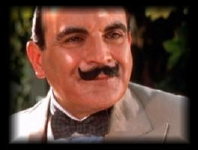
● Hercule Poirot’s Christmas. [Published in the US as Murder for Christmas.] TV movie [series episode]: London Weekend/PBS, 1994 (scw: Clive Exton; dir: Edward Bennett). SC: Hercule Poirot (David Suchet)
● Hickory Dickory Dock. TV movie [series episode]: London Weekend, 1995 (scw: Anthony Horowitz; dir: Andrew Grieve). SC: Hercule Poirot (David Suchet)
● The Hollow. TV movie [series episode]: Granada/A&E, 2004 (scw: Nick Dear; dir: Simon Langton). SC: Hercule Poirot (David Suchet)
● The Hound of Death and other stories. TV movie The Last Seance, based on ss in this collection: Granada, 1986 (scw: Alfred Shaughnessy; dir: June Wyndham-Davies)
● Lord Edgware Dies. TV movie: CBS, 1985, as Thirteen at Dinner (scw: Rod Browning; dir: Lou Antonio). SC: Hercule Poirot (Peter Ustinov). Also: Carnival/A&E, 2000, as Lord Edgware Dies (scw: Anthony Horowitz; dir: Brian Farnham). SC: Hercule Poirot (David Suchet)
Wed 3 Sep 2008
FIRST YOU READ, THEN YOU WRITE
by Francis M. Nevins
If there’s ever a biography of Ellery Queen—not of the detective character but of the cousins Frederic Dannay and Manfred B. Lee who created Ellery and also used his name as their joint byline—the following incident from Fred’s life deserves to be included.
The first part comes mainly from one of the long introductions that he wrote for each story published in Ellery Queen’s Mystery Magazine during its early years; the follow-up was unearthed by radio historian Martin Grams, Jr. and will appear in one of his forthcoming books.
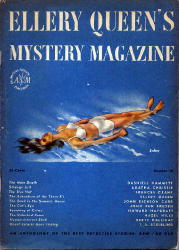
In the spring of 1946, soon after being discharged from the Army at the end of World War II, Dashiell Hammett arranged with “a certain school of social science in New York City” to offer a Thursday evening course on mystery fiction aimed at writers and writer wannabees.
At this time Fred’s main tasks in life were keeping EQMM afloat and, after his wife’s death from cancer, raising two young sons. He read the announcement of Hammett’s course and was impelled by curiosity to attend the first session, on May 2.
Hammett invited him on the spot to co-teach the course and Fred agreed, each two-hour stint followed by “all-night bull-and-brandy sessions” between those giants of crime fiction. At the end of the May 16 class a young woman named Hazel Hills Berrien approached Fred and offered him the manuscript of a story she had begun writing after the first session.
Fred, as always, suggested certain changes — “in the character of the detective, in the plot construction, and in the title,” he said later—but when they were made to his satisfaction, he bought the tale, which appeared in EQMM for September 1946 as “The Unlocked Room” by Hazel Hills.
Then as now, magazines appeared on the stands some time before the publication month listed on their front covers, and the September EQMM had been available at least for a few weeks before August 31, 1946. That evening’s episode of the popular ABC radio series The Green Hornet was called “Death in the Dar” and dealt with a civil servant accused of embezzlement who is found shot to death in a room with the door locked and the window bolted. Newspaper publisher Britt Reid, a.k.a. the Green Hornet, rejects the obvious theory of suicide and eventually proves that the man was murdered.
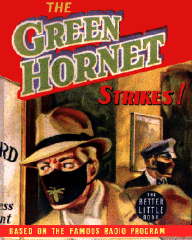
Hazel Hills Berrien wrote ABC four days after the broadcast, admitting that she hadn’t heard the episode but claiming she’d been told by a friend that it “bore a peculiar resemblance to a recently published short story of mine.”
In this and several subsequent letters, each more threatening than the last, she demanded a copy of Dan Beattie’s script but refused to send ABC’s lawyers a copy of her story.
Eventually Fred heard of the dispute and, on October 11, wrote to Green Hornet creator George W. Trendle, promising a copy of September’s EQMM and asking in return for a copy of Beattie’s script.
Four days later and after reading “The Unlocked Room,” Trendle replied to Fred, rejecting any allegation of plagiarism but saying: “[H]ad Miss Hills handled the matter as diplomatically as you have, I think a copy of our script would have been in her hands long ago.”
A later letter to Fred from Green Hornet attorney Raymond Meurer made the same point: “[W]e regret that the matter was handled so clumsily by Miss Hills…. [H]ad we received the request originally from you, we would not have hesitated a moment in supplying the script.” The tempest in a teapot quickly blew away since the only similarity between Hills’ story and the Hornet script was that both involved a murder in a locked room with a gimmicked window.
As far as I know Hills never wrote another story, certainly none published in EQMM.
Among the reprints in the EQMM issue that contained Hills’ story was one by Agatha Christie (“Strange Jest,” a Miss Marple tale originally published in 1941), again with an introduction by Fred Dannay, this one quoting a stanza from one of Christie’s poems.
It comes from “In the Dispensary,” which was included in her collection The Road of Dreams (Bles, 1925):
From the Borgias’ time to the present day, their power
has been proved and tried:
Monkshood blue, called aconite, and the deadly cyanide.
Here is sleep and solace and soothing of pain—
courage and vigour new;
Here is menace and murder and sudden death—in these
phials of green and blue.
Okay, so it’s doggerel. Thanks anyway, Fred, for giving me this item for my column’s Poetry Corner more than sixty years ago!
John Michael Hayes (1919-2007) never wrote a mystery novel or short story but, thanks mainly to his screenplays for several Alfred Hitchcock films, most notably Rear Window (1954) and the remake of The Man Who Knew Too Much (1956), his memory remains green for us.
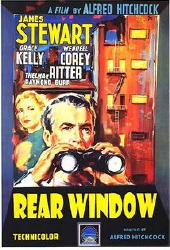
I recently had occasion to read a deposition Hayes gave in August 1991 in connection with some litigation over Rear Window and was delighted to find some information about Hitchcock’s connection with Cornell Woolrich that I believe has never appeared in print.
Among the six tales brought together in the second collection of Woolrich’s short fiction (After-Dinner Story, as by William Irish, 1944) were “Rear Window” (first published under Woolrich’s own name in Dime Detective, February 1942, as “It Had To Be Murder””) and “The Night Reveals” (first published in Story Magazine for April 1936).
Hitchcock was interested in both. Shortly after Hayes began working on the Rear Window screenplay, “Hitch asked me…if I would read [“The Night Reveals”] and comment on it because he had [had] a choice between the two stories and wanted to know if he’d made the right choice. And I said he certainly had because “Rear Window” lent itself to intense suspense material and intense personal relationships which the other story didn’t.”
Still and all, “The Night Reveals” is also marked by powerful suspense scenes and an intense relationship—between insurance investigator Harry Jordan and his wife, who he comes to suspect is a compulsive pyromaniac—and it’s a shame Hitchcock didn’t at least use it as source for an episode of his TV series. Preferably one directed by himself.
Thu 21 Jun 2007
AGATHA CHRISTIE – N or M?
Dell 187, reprint paperback: mapback edition; no date stated, but generally accepted as 1947. Hardcover editions: Collins Crime Club (UK), 1941; Dodd, Mead (US), 1941.
I will not be so foolhardy as to list all of the editions that this book has been published in, nor will I supply more than the front and back cover of this particular mapback edition, especially since the jackets of the respective hardcover editions are so rather plain and unexciting.
But speaking of mapbacks, what I just realized now, strangely enough, is that not once while reading N or M? did I refer to the back cover. Not until getting an image ready for uploading did I even think of it. And so, looking it just now, I find it utterly remarkable that while I all of the geographical details of the small seaside resort town of Leahampton essentially wrong in my mind, the overall picture in my head was exactly right. (And of course who is there to say that the artist who drew the map had the details right?)
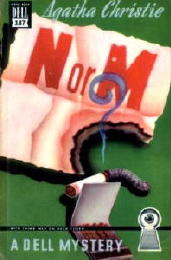
This is a Tuppence and Tommy (Beresford) book, and if you were to check the date that the book was published (1941), you might immediately gather that this wartime book had something to do with the war, and indeed it does. (It is my impression that relatively few murder mysteries published during the war ever mentioned the war, but this one does, and directly so. Other handedly, my impression could be totally false. It is a subject worthy of further investigation.)
I have not read the earlier books in the Tuppence and Tommy series in quite some time, so I do not recall in which one of them the twosome were secret agents in World War I, but when this book begins, they are beginning to feel their age, not to mention the pain of their rejection, as sitting on the sidelines is not their idea of how to spend the time they find free on their hands, nor in any way how to make the best use of their abilities.
A small pause here while I investigate and come back with a short list of the books in which the pair of intrepid adventurers appeared:
The Secret Adversary, 1922. [This must be the World War I adventure .]
Partners in Crime, 1929. [A story collection disguised as a novel.]
N or M?, 1941.
By the Pricking of My Thumbs, 1968.
Postern of Fate, 1973.
That’s quite a range of dates, and the gap between the 3rd and 4th is a huge one, 27 years, but I don’t imagine that it is anywhere near a record — the longest break between appearance of series characters. (A question like this is something else I wish I had more time to look into.)
But back to the story. Luckily enough Tommy is offered a job by the British equivalent of Homeland Security, so hush-hush, he is advised, that he should not even tell Tuppence. Who, of course, has other ideas, and thus indeed there is a story.
It seems that a pair of spies for the Germans, N (a man) and M (a woman) are located in the aforementioned seaside resort town of Leahampton, and in particular they may even be living there in a private hotel called Sans Souci. An amateur is precisely what is required, Tommy is told, as a professional would be spotted right away.
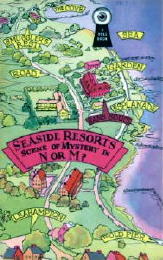
During wartime towns like Leahampton would be populated by (as related on page 14): “old ladies, old colonels, unimpeachable spinsters, dubious customers, fishy customers, a foreigner or two. In fact, a mixed bag.” And the two spies, Tommy again is advised, are among them.
Now if there are people Agatha Christie could write about more capably than “old ladies, old colonels, unimpeachable spinsters, dubious customers, fishy customers, a foreigner or two,” I don’t know who they would be, nor do I know of any other mystery writer could outdo her in this regard, either.
What with the number of people staying on at Sans Souci to describe and make distinguishable, it might have been a Herculean task to succeed in doing so, but what Agatha Christie had was a knack of instant characterization for the inhabitants of her stories, and so it is here. And there is more. Christie is often put down for mysteries that focus more on the plots than they do on the writing of them, but such critics are generally wrong, as this book amply demonstrates. It is so smoothly written that 50 pages flash by in what seems to be an instant — gently humorous at times, sometimes (later on) deadly serious, and with a sense that something suspicious is always going on.
There are a good many suspects at hand, in other words, in an oddly arranged version of the closed manor house type of mystery, but with little of substance to back up this statement, I do not believe that spies and espionage were Ms. Christie’s strongest points. Or in other words, where the book fails, if indeed it does, is in the plotting, which seems forced and unconvincing, concluding with some derring-do and remarkable rescuing that seems entirely fortuitous.
And that the bring-down-the-curtain revelation at the end was one that I was suspicious about myself several pages earlier — “What’s going on here?” I wondered to myself (you’ll have to take my word for it) — which only goes to reinforce the statement I made in the preceding paragraph. Entirely enjoyable then, is my conclusion, but weakest precisely (and curiously) where you’d expect an Agatha Christie novel not to be.

